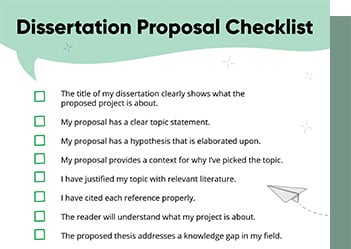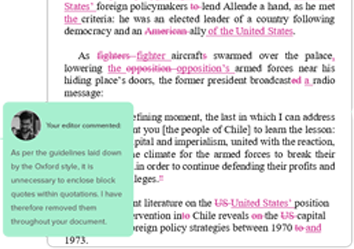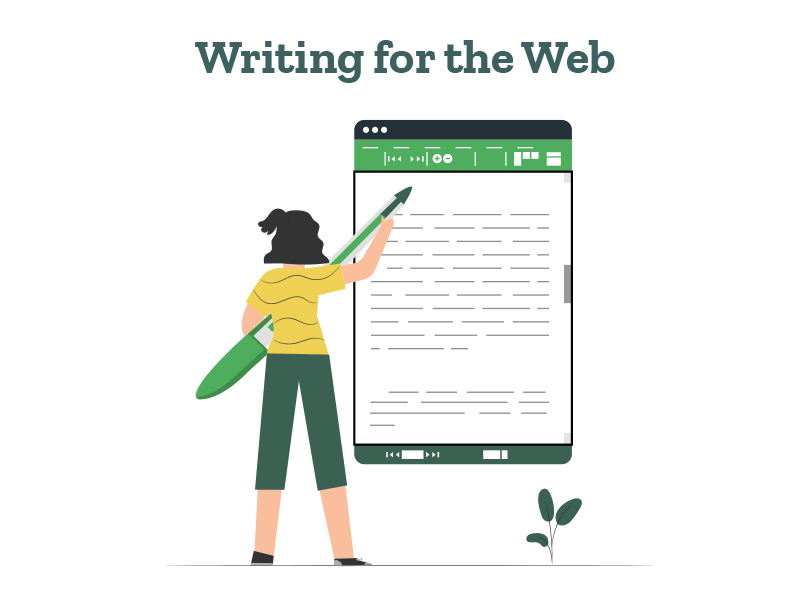Still have questions? Leave a comment

Checklist: Dissertation Proposal
Enter your email id to get the downloadable right in your inbox!
[contact-form-7 id="12425" title="Checklist: Dissertation Proposal"]
Examples: Edited Papers
Enter your email id to get the downloadable right in your inbox!
[contact-form-7 id="12426" title="Examples: Edited Papers"]Need
Editing and
Proofreading Services?

What Is an Adverb? Definition, Types, & Practical Examples
May 23, 2025
8 min read
Hey there! Want to know about adverbs? You’re in the right place! Our guide will take you through everything you need to know about adverbs. So let’s dive in and explore what adverbs are, different types of adverbs, an adverb definition and examples, and so much more.
Plus, we’ve got some fun bonuses lined up, including a list of adverbs ending in “ly” and a peek into the word history of adverbs. Let’s start with an easy adverb definition!
What is an adverb?
An adverb is a word that modifies or provides more information about a verb, adjective, or another adverb. Adverb answers include questions such as when, where, how, how much, and how often, helping clarify the circumstances of actions in a sentence.
An adverb modifies verbs, adjectives, and other adverbs. Adverbs modifying verbs can describe how, when, where, why, how often, or how much an action is performed. For example, in “She runs quickly,” the word “quickly” is an adverb because it shows how she runs.
Knowing adverbs’ meaning helps us understand how they add flavor and clarity to our sentences.
Here are a few adverbs that are commonly used. Many adverbs end in -ly, but not all. Common adverbs include those in the following list:
How (Manner): Quickly, slowly, roughly
When (Time): Now, later, someday
Where (Place): Here, outside, there
How much (Degree): Very, almost, quite
Here’s a most commonly used “ly” adverbs list:
- Softly
- Rapidly
- Easily
- Happily
Many adverbs are formed by adding -ly to adjectives. Almost all adverbs can be used in degrees of comparison to express varying degrees of action or quality.
Now that we’ve understood how to define adverbs and seen a list of adverbs that are commonly used, let’s look at more adverb examples and adverb sentences to better understand the concept!
Examples of adverbs
Quietly, the thief entered your room. (The adverb is ‘quietly’.)
She happily accepted the award. (The adverb is ‘happily’.)
The flowers will bloom soon. (The adverb is ‘soon’.)
We looked everywhere for the lost keys. (The adverb is ‘everywhere’.)
One of the eight parts of speech, adverbs, is an important part of forming sentences.
What are parts of speech?
Parts of speech are specific roles and functions of a word in the English language. Noun, verb, adjective, adverb, pronoun, preposition, conjunction, and interjection are the eight parts of speech.
How to use adverbs in a sentence
Where you place an adverb in a sentence can change both the meaning and the emphasis of your message. In general, adverbs should be positioned as close as possible to the word they modify—whether that’s a verb, adjective, or another adverb.
For example, in “She quickly finished her homework,” the adverb “quickly” is placed right before the verb “finished,” making it clear that the speed applies to the action of finishing. If you move the adverb, the meaning can shift: “She finished her homework quickly” still modifies the verb, but the emphasis is slightly different.
Adverbs can also appear at the beginning or end of a sentence, especially when you want to modify the entire sentence or add emphasis. These are called sentence adverbs. For instance, “Fortunately, the rain stopped before the picnic” uses “fortunately” to modify the entire sentence, expressing the speaker’s attitude about the event. Similarly, “Honestly, I didn’t expect that result” uses “honestly” as a sentence adverb.
Here are a few more examples of adverb placement:
- “Tomorrow, we will start the project.” (adverb at the beginning, modifying the entire sentence)
- “We will start the project tomorrow.” (adverb at the end, modifying the verb phrase)
- “She almost always arrives on time.” (adverb modifying another adverb)
The context and meaning you want to convey will help you decide where to place your adverb. Just remember: the closer the adverb is to the word it modifies, the clearer your sentence will be!
Tip: Using adverbs correctly in your sentences helps clarify meaning and ensures your writing is both clear and professional.
To further solidify our understanding, let’s look at some examples of adverb sentences:
He gently placed the book on the table.
Gently is an adverb that describes the verb ‘placed’.
How was the book placed? – gently
We will go to the park tomorrow.
Tomorrow is an adverb that describes the verb ‘go’.
When will we go to the park? – tomorrow
She left the keys there.
There is an adverb that describes the verb ‘left’.
Where did she leave the keys? – There
Adverb vs. adjective
One common area of grammar mistakes is the difference between adverbs and adjectives. While adjectives describe nouns (e.g., a beautiful flower), adverbs modify verbs, adjectives, and other adverbs, as discussed. Remember, adjectives and adverbs serve different functions and cannot be used interchangeably.
Adjective: She has a beautiful voice. (‘Beautiful’ describes the noun ‘voice’)
Adverb: She sings beautifully. (‘Beautifully’ describes the verb ‘sings’)
Adverb vs. verb
Another crucial distinction is between adverbs and verbs. Verbs indicate actions or states of being (e.g., run, be), while adverbs provide additional information about how those actions are carried out.
Verb: She sings every day. (‘Sings’ describes the action ‘She’ is doing)
Adverb: She sings beautifully. (‘Beautifully’ describes the verb ‘sings’)
Some sentences can also consist of adjectives, adverbs, and verbs, at the same time.
Quick Quiz
She washes her clothes often. (Is ‘often’ an adverb or adjective?)
Adjective
Adverb
The baby is always happy. (Is ‘always’ an adverb or verb?)
Verb
Adverb
I’d rather not go out tonight; I need some rest (Is ‘rather’ an adverb or adjective?)
Adjective
Adverb
Types of adverbs
Adverbs are modifiers, as they modify verbs, adjectives, or other adverbs to add detail or clarity. Some adverbs are made up of more than one word, such as adverbial phrases or clauses, which serve similar grammatical functions. Adverbs can be categorized into several types based on their functions and the kind of information they provide. Here’s an overview of some of the main types of adverbs with their examples:
1. Adverbs of manner (How?)
These describe how an action is performed. These often end in “ly” but not always.
Ms. James spoke quickly. (How did Ms. James speak? – quickly)
He plays guitar badly. (How does he play the guitar? – badly)
2. Adverbs of time (When?)
They tell us when an action occurs.
I met him yesterday. (When did I meet him? – yesterday)
We will leave soon. (When will we leave? – soon)
3. Adverbs of place (Where?)
They indicate where an action takes place. These are usually the adverbs that don’t end in “ly”.
Come here. (Where to come? – here)
Flowers are blooming everywhere. (Where are flowers blooming? – everywhere)
4. Adverbs of degree (How much?)
They express the intensity or degree of an action or an adjective.
He was almost finished with his paper. (How much was he finished? – almost)
It is quite cold outside. (How cold is it outside? – quite)
5. Adverbs of frequency (How often?)
They describe how often an action occurs; in other words, adverbs of frequency describe the regularity or frequency of an action.
She often forgets her keys. (How often does she forget her keys? – often)
He always wakes up early. (How often does he wake up early? – always)
6. Conjunctive adverbs
They are used to connect two independent clauses or sentences, showing the relationship between them. They often indicate things like cause and effect, contrast, or sequence.
He was ill, therefore, he went to the doctor. (‘Therefore’ joins two sentences.)
There was a fire, however, nobody was injured. (‘However’ joins two sentences.)
7. Superlative adverbs
They are used to compare three or more actions, indicating the highest degree or extent of the action.
Of all the boys, he jumped the highest. (‘Highest’ is the highest degree of ‘high’.)
Out of all, she practiced the most. (‘Most’ is the highest degree of ‘more’.)
8. Relative adverbs
They introduce relative clauses, connecting them to the rest of the sentence and referring to a time, place, or reason.
This is the house where I grew up. (‘Where’ relates the first clause with a place.)
I remember the day when we first met. (‘When’ relates the first clause with time.)
9. Interrogative adverbs
They are used to ask questions about manner, time, place, or reason.
Why are you late? (‘Why’ interrogates the action of being ‘late’.)
How did she solve the problem? (‘How’ interrogates the action of ‘solving’.)
10. Adverbs of certainty
They indicate the level of certainty regarding an action or event.
He will certainly attend the meeting. (‘Certainly’ shows the level of certainty.)
They are probably moving next month. (‘Probably’ shows a level of certainty.)
Adverbial phrases
Adverbial phrases are groups of words that work together to function as an adverb, modifying verbs, adjectives, or even other adverbs in a sentence. Unlike single-word adverbs, adverbial phrases can provide richer detail about the manner, time, place, frequency, or degree of an action.
Adverbial phrases can take several forms. One common type is the prepositional phrase, such as “in the morning,” “at the beach,” or “with great care.” For example, in “I went to the store in the morning,” the phrase “in the morning” is an adverbial phrase modifying the verb “went,” telling us when the action happened.
Infinitive phrases can also act as adverbial phrases. In “She paused to think,” the phrase “to think” explains why she paused, modifying the verb “paused.”
Adverbial clauses, which contain a subject and a verb, can also serve this function. For instance, “Because I was tired, I went home early.” Here, “Because I was tired” is an adverbial clause explaining the reason for going home.
Adverbial phrases add depth and variety to your writing by allowing you to describe actions, adjectives, or even other adverbs in more detail. Here are some more examples:
- “He spoke with confidence.” (modifies the verb “spoke”)
- “She finished the test in record time.” (modifies the verb “finished”)
- “They arrived just before sunset.” (modifies the verb “arrived”)
By using adverbial phrases, you can make your sentences more interesting and informative, helping your readers understand exactly how, when, where, or why something happens
When to avoid adverbs
Adverbs can be powerful tools, but using them carelessly can weaken your writing. One common pitfall is using adverbs to modify linking verbs like “feel,” “seem,” or “be.” For example, “I feel strongly about this issue” uses the adverb “strongly” with the linking verb “feel,” but a more vivid verb, like “I am passionate about this issue,” often makes your writing stronger and more direct.
Another issue is relying on adverbs to tell rather than show. For instance, “She spoke loudly” tells the reader how she spoke, but it’s more engaging to show the action: “Her voice echoed through the hall.” Overusing adverbs like “very,” “really,” or “extremely” can also make your writing less precise. Instead of “The music was very loud,” try “The music was deafening” for a more impactful description.
Here are some tips to avoid common adverb pitfalls:
- Use strong, specific verbs instead of pairing weak verbs with adverbs. (“She ran quickly” → “She sprinted.”)
- Be cautious with adverbs modifying linking verbs; often, an adjective or a more descriptive verb is better.
- Show, don’t just tell—use vivid imagery and action instead of relying on adverbs.
- Limit repetitive adverbs like “very,” “really,” and “extremely” to keep your writing crisp.
By using adverbs thoughtfully and sparingly, you’ll make your writing clearer, more engaging, and more effective.
Now that you’re equipped with knowledge about what adverbs are, their types, examples, and more, you’re well on your way to mastering this essential part of speech. It can be your allies in clarity and creativity.
As experts in editing and proofreading services, PaperTrue is always here to make your writing shine. So keep experimenting with these linguistic gems, and watch your language skills flourish!
Here are some more useful resources for you:
- Principal vs. Principle: Finance, School, & Other Uses
- How to Start an Essay: 4 Introduction Paragraph Examples
- What Is a Conjunction? Definition, Types & Examples
- Then vs. Than: How to Use Each in a Sentence
- How to Write a Poem: Step-by-Step Guide to Writing Poetry
- 10 Best Free Online Grammar Checkers: Features and Ratings








